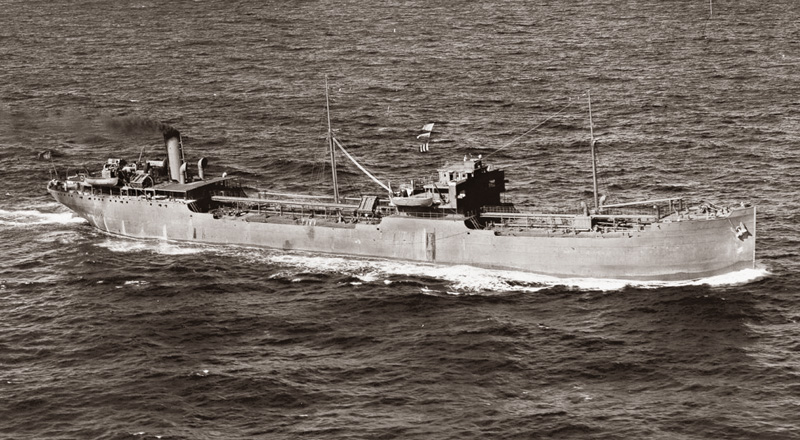
Halo is a steam tanker built in 1920 and owned by the Cities Service Oil Company. With a keel length of 436 feet and beam of nearly 56 feet, the 6,986-ton tanker carried a cargo of 63,000 barrels of crude oil on her final voyage from Galveston, Texas to New Orleans, Louisiana. In the early hours of May 20, 1942 approximately 50 miles from the Mississippi River’s Southwest Pass, U-506 attacked the unarmed Halo, firing two torpedoes into her starboard side. The first torpedo struck near the bridge while the second struck just aft of the bridge. As the tanker exploded and began to sink, the crew scrambled to escape the flames. Only one life raft was successfully launched. Out of 42 men on board Halo, only 23 escaped the vessel before she sank. In the hours after the attack, oil burned on the water and survivors clung to whatever debris floated to the surface. Five days later, the Mexican steamship, Oaxaca, rescued two survivors – one who later died at the hospital – and a third man who had recently perished. Two days after that, the British tanker, SS Orina, rescued two more men from a life raft. The other 18 men who entered the water died at sea.
Halo remained undiscovered for nearly 60 years until 2000, when a deep-tow hazard survey performed by C&C Technologies for Pogo Producing Company discovered the shipwreck in the Grand Isle leasing area near Pogo’s proposed pipeline route. Lying in more than 450 feet of water, the shipwreck was identified by C&C marine archaeologist Rob Church as the remains of Halo.
During the 2004 Deep Wrecks project, a study partly funded by BOEM (then MMS), Halo was one of several shipwrecks investigated by archaeologists using a Remotely Operated Vehicle (ROV). The purpose of the study was to examine the artificial reef effect of shipwrecks and learn more about shipwreck degradation and metal corrosion processes. ROV video footage and rusticle, biological, and sediment samples were collected. Several species of corals, invertebrates, crustaceans, and other fauna were observed on and near the wreck. Biological experiments and bio-battery coupons were placed on site to measure microbial concretion and biofilm formation and the electrical potentials (voltages) of in situ metals. The study found that Halo was “dominated by concretious growths over most of the hull and so the major iron losses…would be dependent upon the rates at which iron moves out through the concretions into the oceanic environment. Some rusticle activity was evident on Halo and this may mean increases in the rate of iron loss from the steel.” (Church et al 2007)
Researchers concluded, “From this investigation, the primary observations are that all the ships (investigated during the study) have become heavily infested with attached biological activity that varies from ship to ship. Depth may be a factor since the ships sit along a transect line from 87 meters to 1,964 meters. Depth cannot be the only influencing factor since the ships also sit within influence of the Mississippi River’s discharges. Clearly…Halo, being closer to these discharges already exhibit(s) the effects of the more eutrophic environment causing thicker attached growths and a greater density of fish populations.” (Church et al 2007).